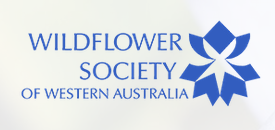Currently in flower all around the southwest is the bright purple native wisteria.
Native wisteria belongs to the plant family Fabaceae and to the genus Hardenbergia. Hardenbergia is both native and endemic to Australia and is found in all our states and territories. The genus Hardenbergia is made up of 4 species; Hardenbergia violaceae, more commonly called false sarsaparilla or purple coral pea, Hardenbergia sp. Mt. Mulligan, Hardenbergia perbrevidens and Hardenbergia comptoniana, more commonly called native wisteria. Only one of these species is native to Western Australia and to the southwest – Hardenbergia comptoniana.
Hardenbergia can be shrubs that are either prostrate (growing closely along the ground) or twining, or they can be lianas (long stemmed woody vine). The flowers of Hardenbergia are arranged in an inflorescence (a group or cluster of flowers arranged on a stem) raceme (an inflorescence of stalked flowers arranged along the main stem). The flowers can be purple, violet, blue and on the rare occasion white in colour and they have contrasting yellow-green eye markings on the standard (see Holly Flame Pea post for a diagram of a typical pea flower). Hardenbergia normally flowers throughout winter and spring.
Native wisteria or Hardenbergia comptoniana is a climbing or twining shrub. Its leaves are compound (a leaf consisting of two or more leaflets – leaves with a fully subdivided leaf blade), narrowly ovate to ovate (oval shaped), 20 – 130 mm long, 4 – 45 mm wide, with rounded tips that have a tiny point at the end. It has a showy inflorescence of drooping axillary flower clusters. The flowers are typical pea flowers, having a standard, a keel and 2 wings (see Holly Flame Pea post for a diagram of a typical pea flower). Native wisteria flowers are a brilliant deep blue to purple colour with yellow ‘eyes’ on the standard, the flowers can sometimes be white in colour, however this is rare.
Hardenbergia comptoniana is found in Jarrah Forest, woodland and shrubland, often on sandy soils and it flowers from July through until October.
The vigorous climbing nature and showy inflorescence of native wisteria make it very easy to spot during its flowering period. At the moment it can be found flowering in native bushland, parkland and on vacant land, climbing over anything and everything in its path. It is one of Western Australia’s most well-known wildflowers, so make sure to look out for it; you won’t be able to miss it.
Sources:
- Wheeler, J., Marchant, N. and Lewington, M. (2002). Flora of the South West of Western Australia, Volume 2. Australian Biological Resources Study and University of Western Australia Press. Perth, Western Australia.
- Florabase







